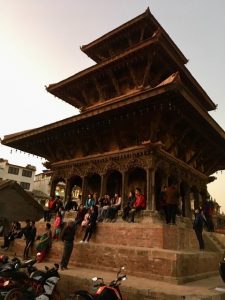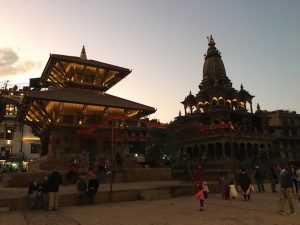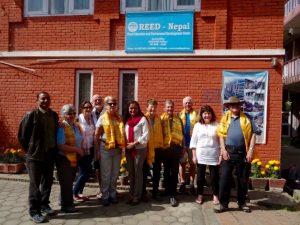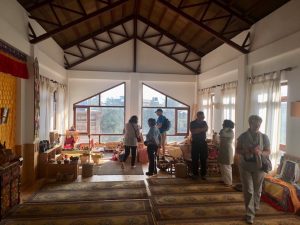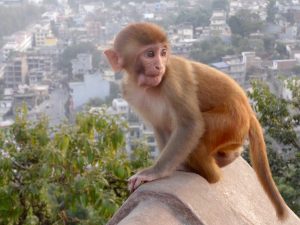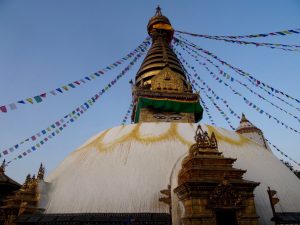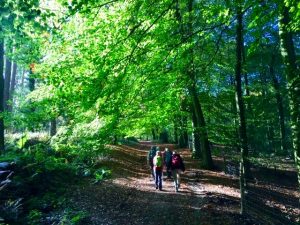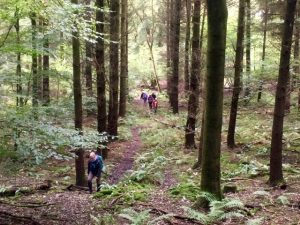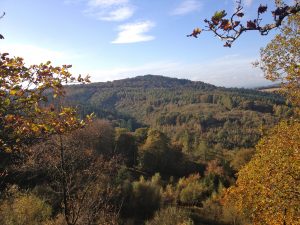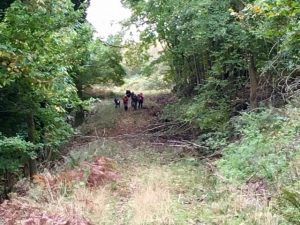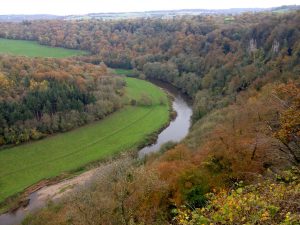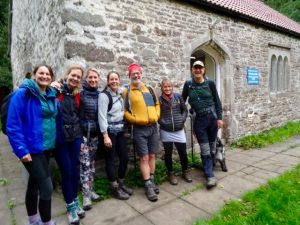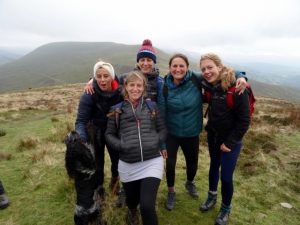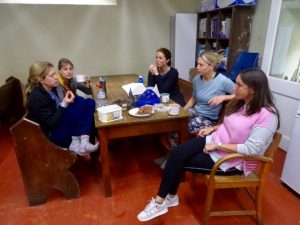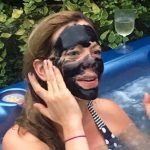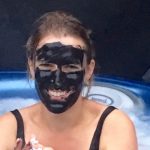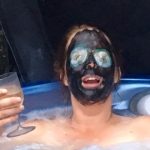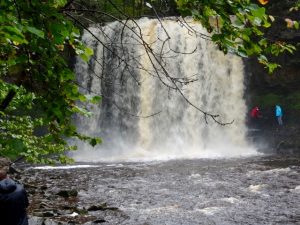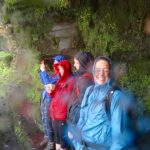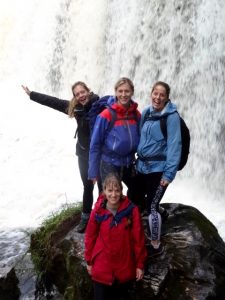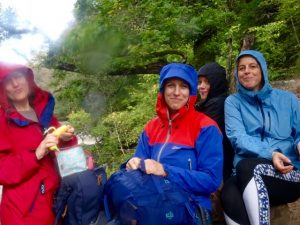Under normal circumstances we would fly from Kathmandu to Bhadrapur, but the latter was closed for renovations, so we had to fly to Biratnagar, one of the industrial centres of Nepal.
On arrival at the airport we hung around outside the terminal waiting for one of the hotel staff to bring our packed breakfasts, which both we and they had forgotten. Fortunately, we did not have to wait long as motorbikes can weave their way through the early morning traffic more easily than a car. Entering the domestic check-in terminal you are hit by a cacophony of noise, of shouted instructions echoing in the high ceilinged hall, giving us little chance to understand, even if we could speak the language. But, remarkably, it seems to work. Our bags were checked in, boarding passes issued with a warning that the flight was delayed due to bad weather.
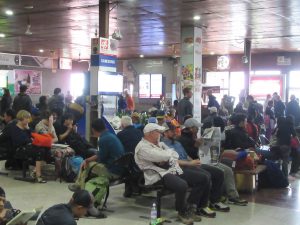 Having passed through security, it was simply a matter of sitting in the departure lounge and waiting. More indecipherable announcements called people to departure gates, which, interestingly, the longer we waited became less indecipherable as our ears and brains adjusted. Eventually, an hour late, an almost indecipherable announcement called us and we boarded the ancient bus to take us to our waiting aircraft.
Having passed through security, it was simply a matter of sitting in the departure lounge and waiting. More indecipherable announcements called people to departure gates, which, interestingly, the longer we waited became less indecipherable as our ears and brains adjusted. Eventually, an hour late, an almost indecipherable announcement called us and we boarded the ancient bus to take us to our waiting aircraft.
On these flights it is always best to sit on the left when you fly east. This gives you the best view of the mountains. All of our party, except Anna had left sided seats, so I gave up my window seat and sat on the right side. I have done this flight numerous times and it is only fair that others, who may never have the opportunity again, get the best seats.
And what great views they had, once we had cleared the early morning mist and smog of the Kathmandu Valley. Above it all, as clear as a bell, a wall of majestic, snowy mountains like no others in the world. First the peaks of Langtang, but as we flew east more recognisable peaks came into view – Cho Oyu (6), Pumor Ri, Nuptse, Lhotse (4), Everest (1), Makalu (5) and Kangchenjunga (3). Five of the world’s top six mountains in one view. It is remarkable and a view that excites, whether you have seen once or ten times.
On arrival in Biratnagar, our two land cruisers were waiting for us and as soon as they were loaded, we started the six hour drive to Ilam. Biratnagar is a sprawling city and it seemed to take ages to escape the urban area that makes up Nepal’s fourth largest city. Escape we did, and we travelled through part of the low lying agricultural landscape of the Terai. The rice harvest was well under way and fields of stooped saris could be seen on either side of the road. It is mainly women who do this back-breaking labour, and even though the landscape is flat, there is little evidence of farm machinery to make life easier.
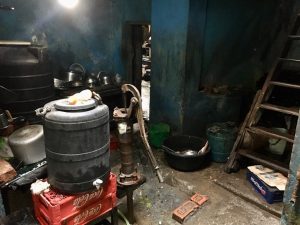 In one town we stopped for some lunch. It wasn’t a particularly welcoming place to eat, so we tended to look for very safe options on the menu, vegetable soup or vegetable chow mien. Just as well, for when we went to the loo we discovered it was adjacent to the food preparation area, which was not appealing. Perhaps, if we had gone to the loo first, we might have decided to go hungry. To be fair, nobody suffered any ill-effects.
In one town we stopped for some lunch. It wasn’t a particularly welcoming place to eat, so we tended to look for very safe options on the menu, vegetable soup or vegetable chow mien. Just as well, for when we went to the loo we discovered it was adjacent to the food preparation area, which was not appealing. Perhaps, if we had gone to the loo first, we might have decided to go hungry. To be fair, nobody suffered any ill-effects.
Gradually, we could see faint outlines of hills to the north, which became clearer as we got nearer. The vegetation changed with large areas of sal forest with cattle, goats and pigs foraging amongst them. These gave way to tea plantations of finely clipped bushes. I have travelled through this area several times and never see the tea pickers in action.
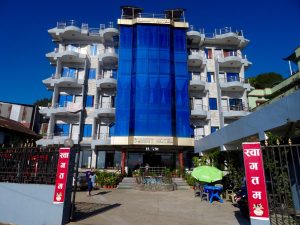 After six hours on the road we reached Ilam, the tea centre of Nepal. Our accommodation for the night was the Summit Hotel, which looks very respectable from the outside. It is owned by an ex-Gurkha who used to live in Hereford, and presumably built the hotel with his pension. The rooms are all very spacious but you can never be sure that the beds have been changed. Some rooms that were not occupied looked a mess as if the hotel is still in a state of ‘work in progress’.
After six hours on the road we reached Ilam, the tea centre of Nepal. Our accommodation for the night was the Summit Hotel, which looks very respectable from the outside. It is owned by an ex-Gurkha who used to live in Hereford, and presumably built the hotel with his pension. The rooms are all very spacious but you can never be sure that the beds have been changed. Some rooms that were not occupied looked a mess as if the hotel is still in a state of ‘work in progress’.
The owner may well have his finger on the pulse but the staff, mostly made up of young men, don’t seem to have much idea of how to run a hotel. It is bit like Faulty Towers! Despite the many little things that are wrong with it, it is still, probably, one of the better hotels in Ilam. The night was disturbed by a horn blowing, as if in a procession, at 1.35 in the morning. This set the dogs off, making it difficult to fall back into a deep sleep.
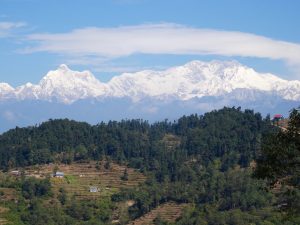 Heading off after breakfast the following morning, we continued our journey on the ever winding road, up hill and down. For the first time, I got expansive views of the Kangchenjunga range with the hugely impressive Yallung on the western end and Padam, over the border in Sikkim, at the eastern end. Looking north, we could see layer upon layer of Himalayan foothills all leading up to the snow and rock wall that forms the border with India and Tibet. It was very impressive.
Heading off after breakfast the following morning, we continued our journey on the ever winding road, up hill and down. For the first time, I got expansive views of the Kangchenjunga range with the hugely impressive Yallung on the western end and Padam, over the border in Sikkim, at the eastern end. Looking north, we could see layer upon layer of Himalayan foothills all leading up to the snow and rock wall that forms the border with India and Tibet. It was very impressive.
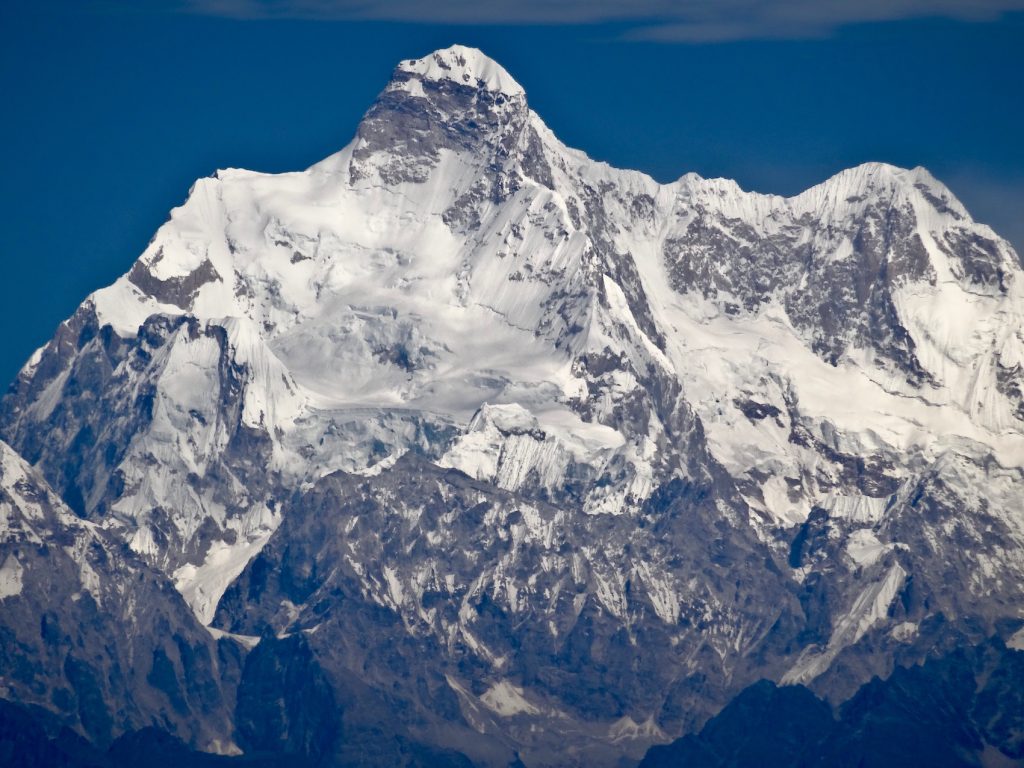 Phidim, about half way on our six hour journey, gave us a welcome break from our journey north. Here we were able to stretch our legs and have a light lunch before continuing.
Phidim, about half way on our six hour journey, gave us a welcome break from our journey north. Here we were able to stretch our legs and have a light lunch before continuing.
Reaching Taplejung by mid afternoon, we checked into the Mewakhola Resort. I popped up to the REED office to say hello to the staff there and was joined by Rajendra. It was good to see him again.
My memory of Mewakhola Resort was of very long waits between ordering food and having it placed on the table in front of me, as much as two hours. Their service has improved tenfold, with food being brought out a matter of minutes after placing the order. Despite ordering a mushroom pizza, I was given a chicken pizza, which proved to be excellent, and did not produce any ill effects.
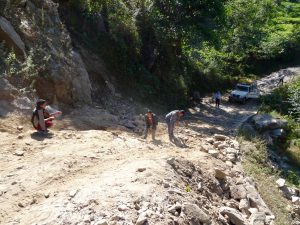 Despite two days of travelling by jeep, we hadn’t finished with them yet, and the hardest part of the journey was yet to come. Travelling for about five hours on a very bumpy, unmade road, we headed further into the mountains to Tapethok. In places the road was so uneven that the vehicles, despite having significant ground clearance, scraped their undersides on rock. At one point, the drivers got out and rearranged the rocks to make sure their vehicles could negotiate a particularly difficult section without incident.
Despite two days of travelling by jeep, we hadn’t finished with them yet, and the hardest part of the journey was yet to come. Travelling for about five hours on a very bumpy, unmade road, we headed further into the mountains to Tapethok. In places the road was so uneven that the vehicles, despite having significant ground clearance, scraped their undersides on rock. At one point, the drivers got out and rearranged the rocks to make sure their vehicles could negotiate a particularly difficult section without incident.
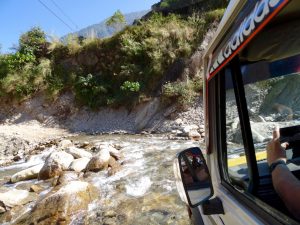 It wasn’t always quite that simple. On the approached to Tapethok we had to cross a river. My vehicle managed to get through, but the other became stuck mid river. Thinking that less weight in the vehicle would make it easier, Clive climbed out, slipped on the wet rocks and fell in, cutting his hand and submerging his camera. The hand could be repaired but the camera was beyond repair. I only found out about this as I was returning to look for them.
It wasn’t always quite that simple. On the approached to Tapethok we had to cross a river. My vehicle managed to get through, but the other became stuck mid river. Thinking that less weight in the vehicle would make it easier, Clive climbed out, slipped on the wet rocks and fell in, cutting his hand and submerging his camera. The hand could be repaired but the camera was beyond repair. I only found out about this as I was returning to look for them.
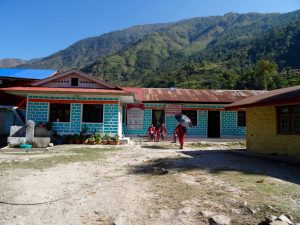 During the course of our stay in Tapethok, we visited the health post, which has had significant investment since my last visit. An extension has been built, creating a recovery room adjacent to the delivery room, providing a good level of care before, during and after childbirth. A new store room has been built behind the post, along with a new kitchen and cooking facilities. It was only after we had visited that we learned that there are plans to build a dam at Tapethok to create a lake and a hydro-electric scheme. The health post, our lodge and everything within easy reach of the river was going to be flooded. The timescale for this was five years and compensation had already been paid out to the health post for a new post to be built on higher ground. Fortunately, the school is already situated on higher ground, so will be unaffected.
During the course of our stay in Tapethok, we visited the health post, which has had significant investment since my last visit. An extension has been built, creating a recovery room adjacent to the delivery room, providing a good level of care before, during and after childbirth. A new store room has been built behind the post, along with a new kitchen and cooking facilities. It was only after we had visited that we learned that there are plans to build a dam at Tapethok to create a lake and a hydro-electric scheme. The health post, our lodge and everything within easy reach of the river was going to be flooded. The timescale for this was five years and compensation had already been paid out to the health post for a new post to be built on higher ground. Fortunately, the school is already situated on higher ground, so will be unaffected.
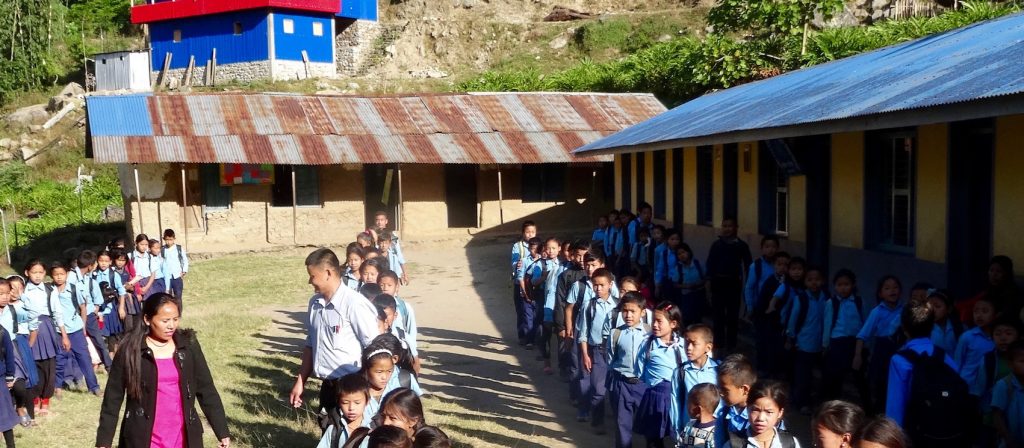
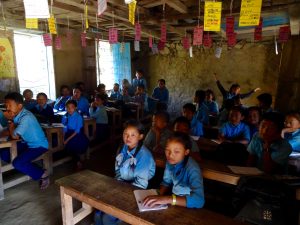 Once settled in Tapethok, we walked up to the school where a new head teacher has recently taken up post. Already, there seemed to be a much better atmosphere in the school, now that it was being run by a headmaster who embraces the ethos of REED of providing quality, child-friendly education. We watched a number of lessons, and, more importantly, I had a close look at the classroom block that we have severe concerns about. The walls are crumbling and it is only a matter of time before it comes tumbling down, with, potentially, devastating consequences.
Once settled in Tapethok, we walked up to the school where a new head teacher has recently taken up post. Already, there seemed to be a much better atmosphere in the school, now that it was being run by a headmaster who embraces the ethos of REED of providing quality, child-friendly education. We watched a number of lessons, and, more importantly, I had a close look at the classroom block that we have severe concerns about. The walls are crumbling and it is only a matter of time before it comes tumbling down, with, potentially, devastating consequences.
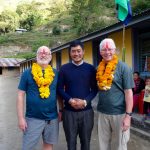
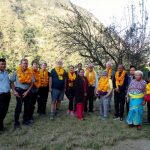
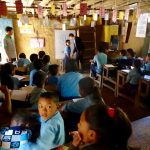
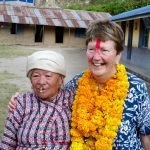
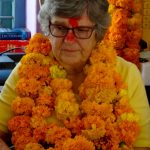
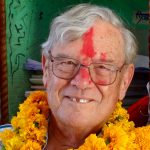
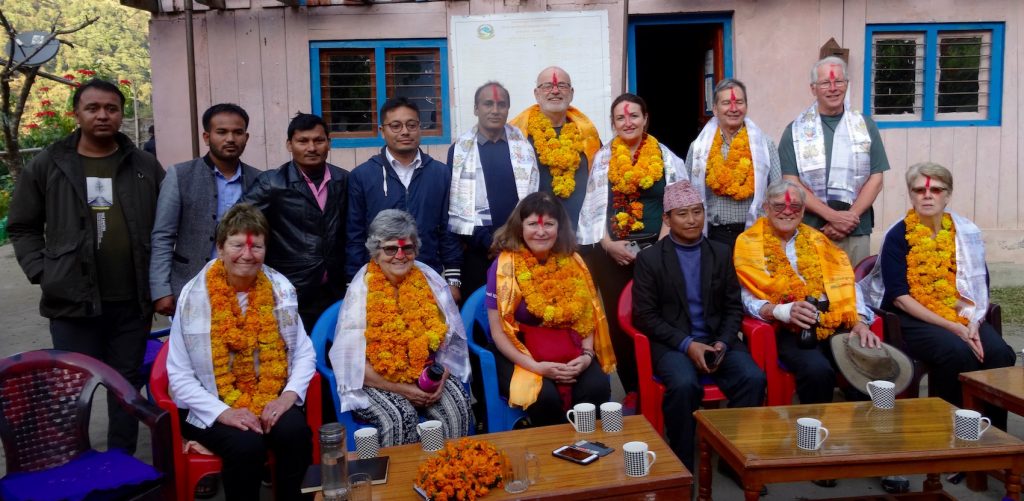
Moving on, we then met with the Chairman of the Rural Municipality, Saroj Limbu, who offered to cover 50% of the cost of a new building at the school. It would still mean that HTUK would have to raise £30,000, as they need to build on two floors to satisfy the needs of the school, but, having inspected the building, it must become a priority.
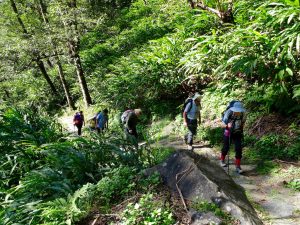 The following morning, porters arrived to carry our bags up to Lelep, where we were to base ourselves. It was good to be walking after so many days of travelling, and the walk up to Lelep is particularly pleasant.
The following morning, porters arrived to carry our bags up to Lelep, where we were to base ourselves. It was good to be walking after so many days of travelling, and the walk up to Lelep is particularly pleasant.
In Lelep, Michelle Crouch was waiting for our arrival. Tim, Anna and I got there ahead of the others and engaged her in conversation. She was so keen to talk, to tell us all she had learned about the school, the girls’ hostel, which was part of our main focus for the visit, and about the health post. We had kept secret for months that she was in for a surprise. She didn’t know that her parents had come out with me from the UK and were just going to stroll into Lelep. The look of surprise on her face, the realisation and then the emotion is something to treasure. It had been a long journey ,but such a rewarding one to have got Jan and Clive, John and Ann to Lelep and to have that lovely element of surprise at the end.
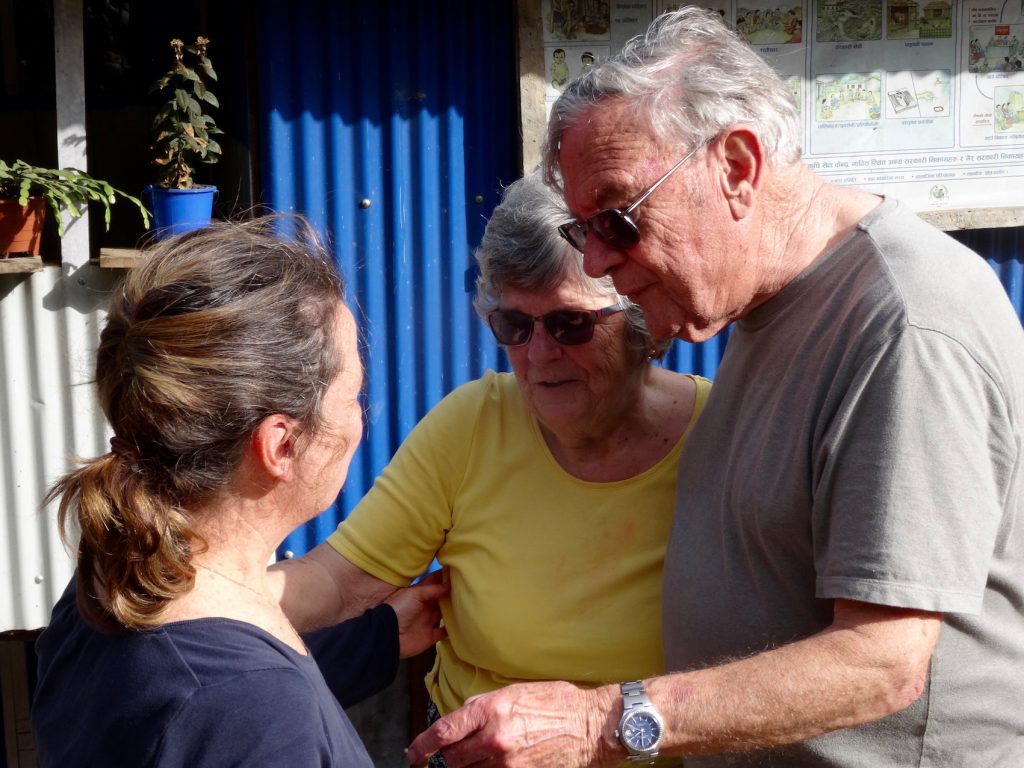
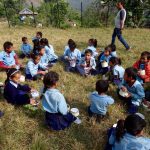
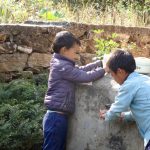
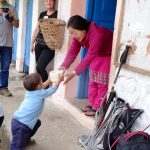 When the bell went the children lined up on the playground. A member of staff handed out the lunch boxes one by one, with the children taking them quietly. There was no rush about the process. The children took their lunch boxes and placed them on the grassy playground. They then went to wash their hands before returning to sit in a whole school group to enjoy their lunch.
When the bell went the children lined up on the playground. A member of staff handed out the lunch boxes one by one, with the children taking them quietly. There was no rush about the process. The children took their lunch boxes and placed them on the grassy playground. They then went to wash their hands before returning to sit in a whole school group to enjoy their lunch.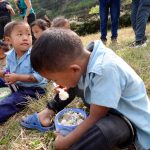
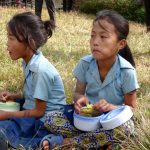
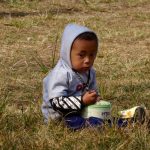 Opening the boxes there were a variety of vegetables on the top layer. Beneath was an ample portion of rice. They mixed their vegetables with the rice. Some ate with spoons while others used the traditional right hand. It was civilised and quiet. The staff were around but they did not have to intervene at all. There were 34 children and they all had a lunch
Opening the boxes there were a variety of vegetables on the top layer. Beneath was an ample portion of rice. They mixed their vegetables with the rice. Some ate with spoons while others used the traditional right hand. It was civilised and quiet. The staff were around but they did not have to intervene at all. There were 34 children and they all had a lunch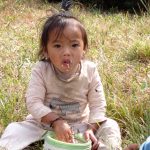
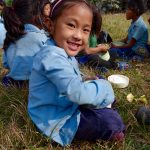
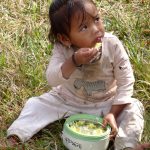 When they finished they washed their lunch boxes out and put them on the wall to dry.
When they finished they washed their lunch boxes out and put them on the wall to dry.




















